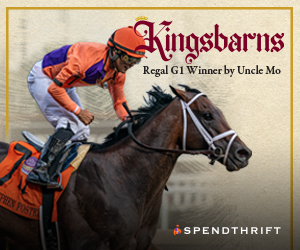
by Kate Richards
The news that Hal Parker, booked on charges of animal theft and abuse in Louisiana, was a positive move forward in a hard-fought battle to dismantle the ‘bailing’ game on social media. Social media, essentially Facebook and Twitter, is the centrifuge for the good and honest appeals to assist in the animal rescue. It also invites the creeps and the charlatans who target the kind-hearted with disease-ridden and emaciated photos of unwanted horses that are ‘on the clock’ and headed for the machete bins in Mexico or the head bolts of Canada.
Hal Parker has become the poster boy for these “bailing pens” presented as a ‘good guy’ stop-gap or quarantine facility for an internet charity based on “gimme or else”. Long before algorithms spotted the altruistic, early television was the theatre for charity pitches and these, for the most part, were legit. The kill buyer/bailing game is a theatre of blood and emotional blackmail. Parker’s operation is a good illustration of donor manipulation as the horses were poorly vetted, incorrectly identified to adopters and forced to live in a filthy ex-chicken coop. Mares mixed with stallions, the strangles sickened victims herding with the weakened. Unlike the TV pitches of old, where orb-eyed toddlers came from extreme conditions, some of these touted horses came from racetracks, others dumped or stolen. Moreover, there was blame — truckloads of it. Good people got tarred from associating with this philanthropist-poser with FB albums full of party pictures. Guilty. I donated last year.
Horse slaughter is not the sole by-product of racing, as the percentage of slaughter-bound ex-racers are significantly lower than those of other breeds, 16-18% from 2017 figures. It serves no purpose other than to present a severe threat to sustainability for a sport and a threat to dog food manufacturers in line for class-actions from toxic chow. No apologies to cultural ‘delicacies’ as that is nauseating. It can be said that the first line of finger-pointing aimed at racing operations is half-baked. There is progress. Hand-wringing instead of doing wastes time. The Parker and Dina Alborano fakery, aside, defensiveness is weakening and financial support, to some extent, is becoming economically correct. Legislation and penalties for abandoning these athletes are slow in coming, but there is an effort that once in a while breaks through the cloud of doublespeak. Doublespeak refers to George Orwell’s book 1984, as noted by a linguist, Dr. Frank Luntz;
“Doublespeak twists and inverts the definitions of words and eliminate terminology the regime considers politically incorrect to thereby also eliminate the subversive concepts associated with them.” (Luntz, 2007/Words that Work)
The process of slaughtering is cloaked in a fallacy that all livestock can be ramped and loaded, then shot with a metal bolt aimed at their moving heads. Horses are emotional, smell blood and are flight sensitive. The bolt does not kill, it renders a state of blackout where pain nerves are still alert. The unconscious state allows their hearts to continue pumping and bleed out, efficiently allowing the gutting and quartering. Slaughtering is horse hell. The slashing of the spinal cord is Mexican method and one can imagine the mentality of a person working on a killing floor hacking away at a captive horse. Picturing the types of employees even with USDA inspections render a controlled process in the US impossible and prohibitively expensive to police plus opens the door to more lurid photography and blame. The effect becomes cause and racing’s demise.
Change is messy and it is hard. Sustaining a business in any arena means changing to adapt to market conditions, events and competition. One of the best moves in the industry was the forming of the National Thoroughbred Welfare Organization by Fox Hill Farm’s Rick Porter and Victoria Keith. Their success rate has been startling, 100 plus ex-racers from Louisiana rehabilitated and re-conditioned for second careers within a short period. Their financials are attached to their website, a recommendation for clarity that informs a donor about how their dollars are spent and the price of the aftercare itself.
The case for cleaning up these bailing pens, auction floors and owner dumping at tracks while offering a legitimate alternative to ‘culling’ these unwanted horses has to be the responsibility of fans and professionals alike and not in a benign, off-handed way. Moreover, given the volumes of testaments to the therapy provided by service horses the Veterans Association would be well served to establish housing and training facilities for the vast numbers of its soldiers returning from war zones with PTSD. Those ballooning numbers are startling. The NTWO is an excellent model with no Congressional investigation as to ‘how to’ required.
Horse slaughter is not a new development. It is as old as a Kentucky hard boot. The salient issue is that even from the most cynical of forecasts, the damage to the sport and its very existence is on the horizon.



